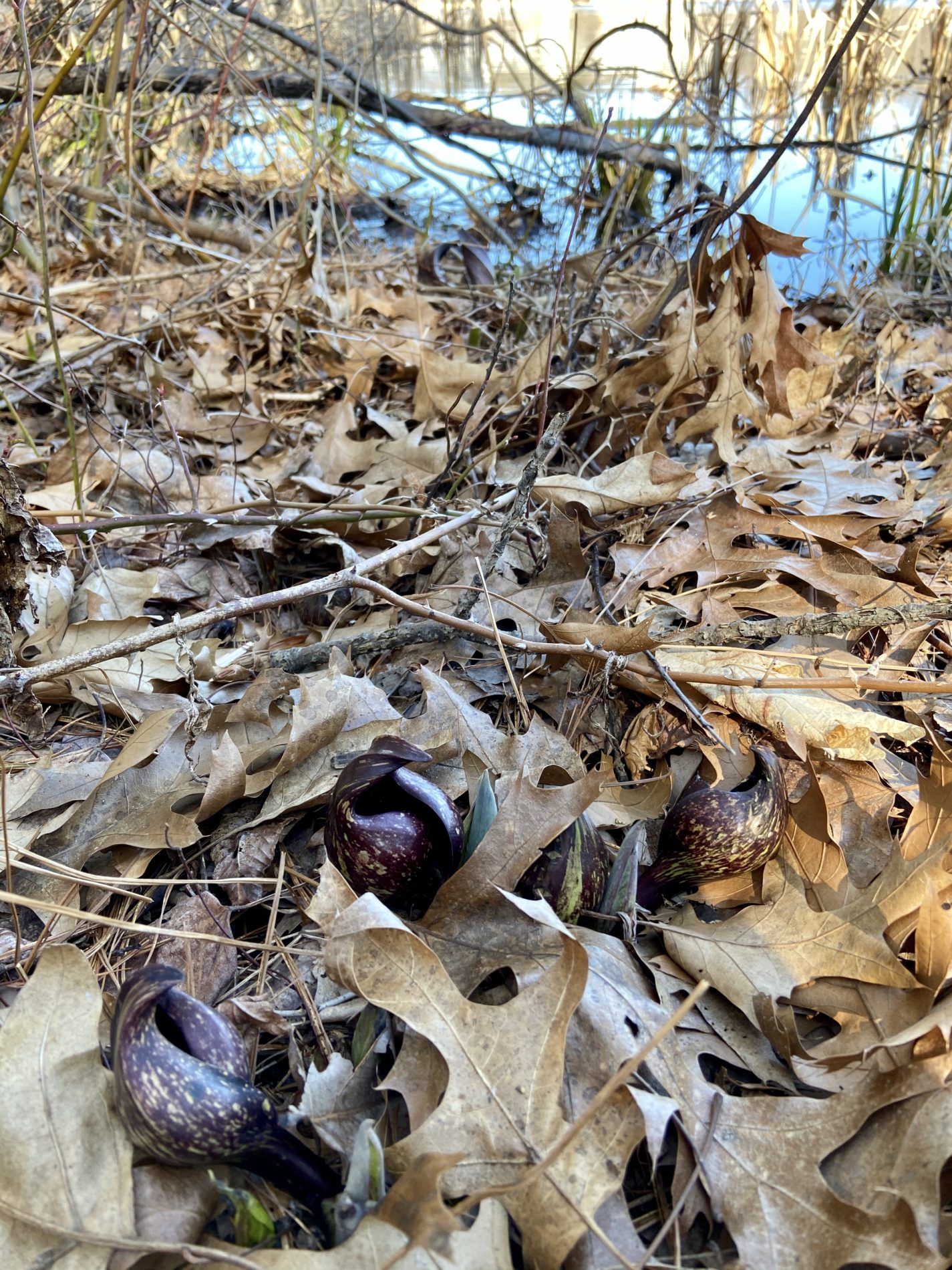Do you know which native New England plant is one of the first to bloom in the spring?
Here’s a hint: you see the different looking “flowers” before the leaves and the plant emits an unpleasant odor…
It’s Eastern skunk cabbage! Symplocarpus foetidus is a spring ephemeral, meaning that it blooms early, goes through a short growth and reproduction phase, then dies back to the ground until the following spring. Look for it in several places at Hawk Valley Farm and the moist woodland areas of West Meadow.
Habitat: These woodland wildflowers prefer moist to wet soil and are found growing along streams, ponds, swamps, and wet, deciduous forests. Being a spring ephemeral allows them to take advantage of the sunlight before the canopy from trees, shrubs, and larger herbaceous plants fills in, lessening the amount of sunlight that reaches the forest floor.
Flowers and pollinators: Since its flowers are among the first to bloom and have a pungent, flesh-like odor, it attracts pollinators such as gnats, carrion flies, and flesh flies. An amazing adaptation of skunk cabbage is that it can generate its own heat (55-95 degrees F), making it possible to grow through frozen soil and snow (source)! The warm temperature of the flowers also helps to attract pollinators by spreading the odor and offering a warm place to land. Spiders also take advantage of this and can be found living in the flowers, waiting for their next meal.

The spathe (modified leaf) surrounds the spadix within, which contains the actual flowers
The actual flowers are tiny and attached to a spadix, which is tucked inside the spathe, a modified leaf that looks like a hood. The curved spathes can be 4-6″ long and are maroon or maroon speckled with yellow. The spadices are yellow or dark purple. The flowers bloom before the leaves of the plant unfurl.
Form: A rosette of basal leaves is produced during the spring, after the flower clusters appear. By early summer, the medium to dark green, oval leaves have reached their maximum size of 2 feet long by 1 foot across. If the foliage becomes bruised or broken, it has a similar pungent odor to the flowers.
Reproduction: Skunk cabbage has a thick, fibrous root system and reproduces by reseeding itself.
Fruit: After pollination, the flowers produce a large (4×3″) purple or black compound fruit which usually ripens after the plant goes dormant. Even the fruits produce an unpleasant odor as they mature!
Wildlife: The caterpillars of the Ruby Tiger Moth and Cattail Borer Moth feed on the foliage, as do slugs and snails. Skunk cabbage foliage contains calcium oxalate crystals, so it is toxic to most vertebrate herbivores. However, black bears and snapping turtles just out of hibernation will occasionally browse the leaves.
CAUTION: Eastern skunk cabbage roots were cooked and eaten by some Native American tribes (do not try this without consulting an expert!), possibly even at our Hawk Valley Farm property, which contains a pond and a peat bog.
This species is still relatively common today, but mostly in undisturbed older woods and bogs. Due to its dense root system and moisture requirements, Symplocarpus foetidus is greatly impacted by deforestation, agriculture, and development. Yet another reason why it’s so important to protect our valuable land resources in Lowell and beyond.
(originally featured as April 2020 Flora & Fauna Friday)

